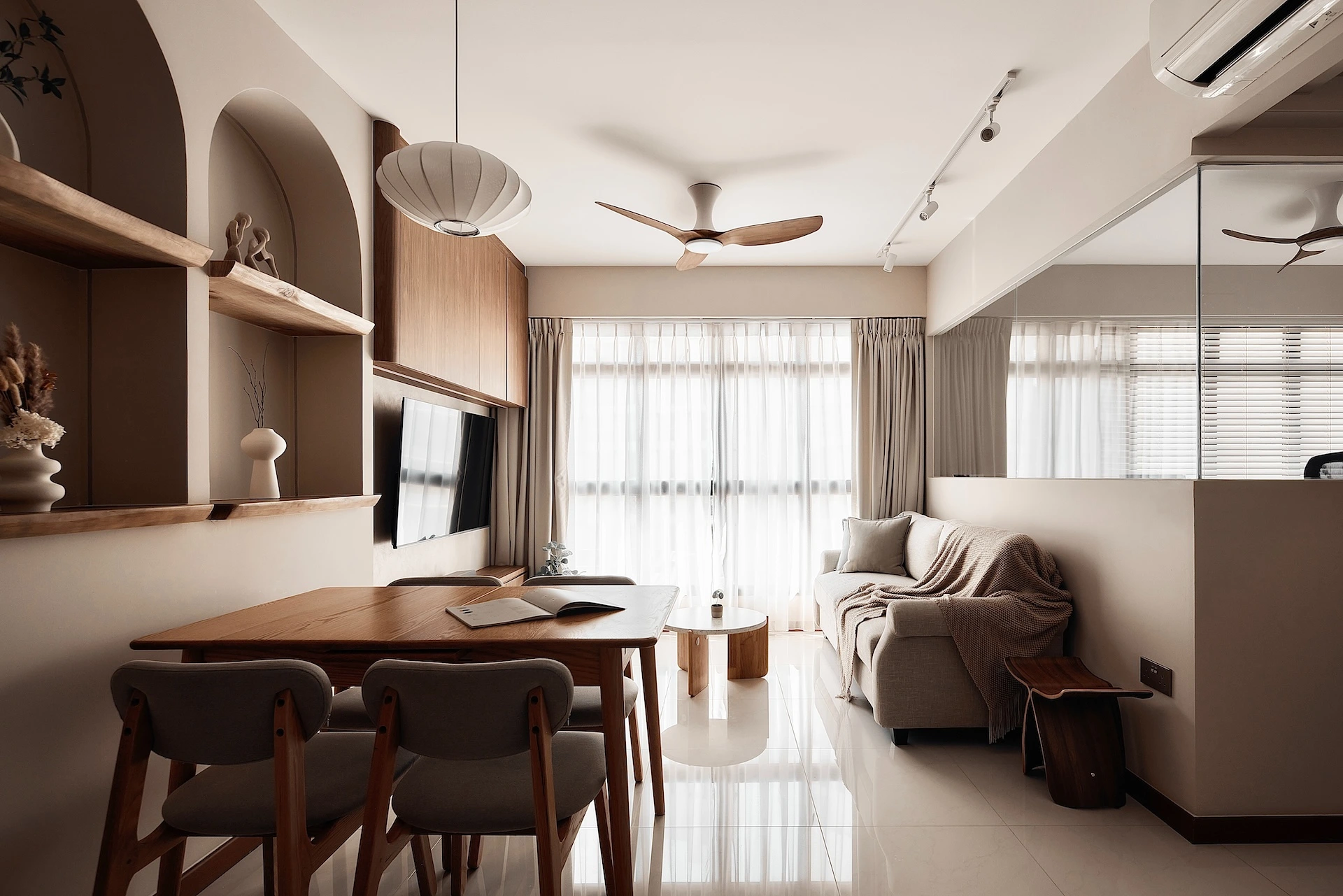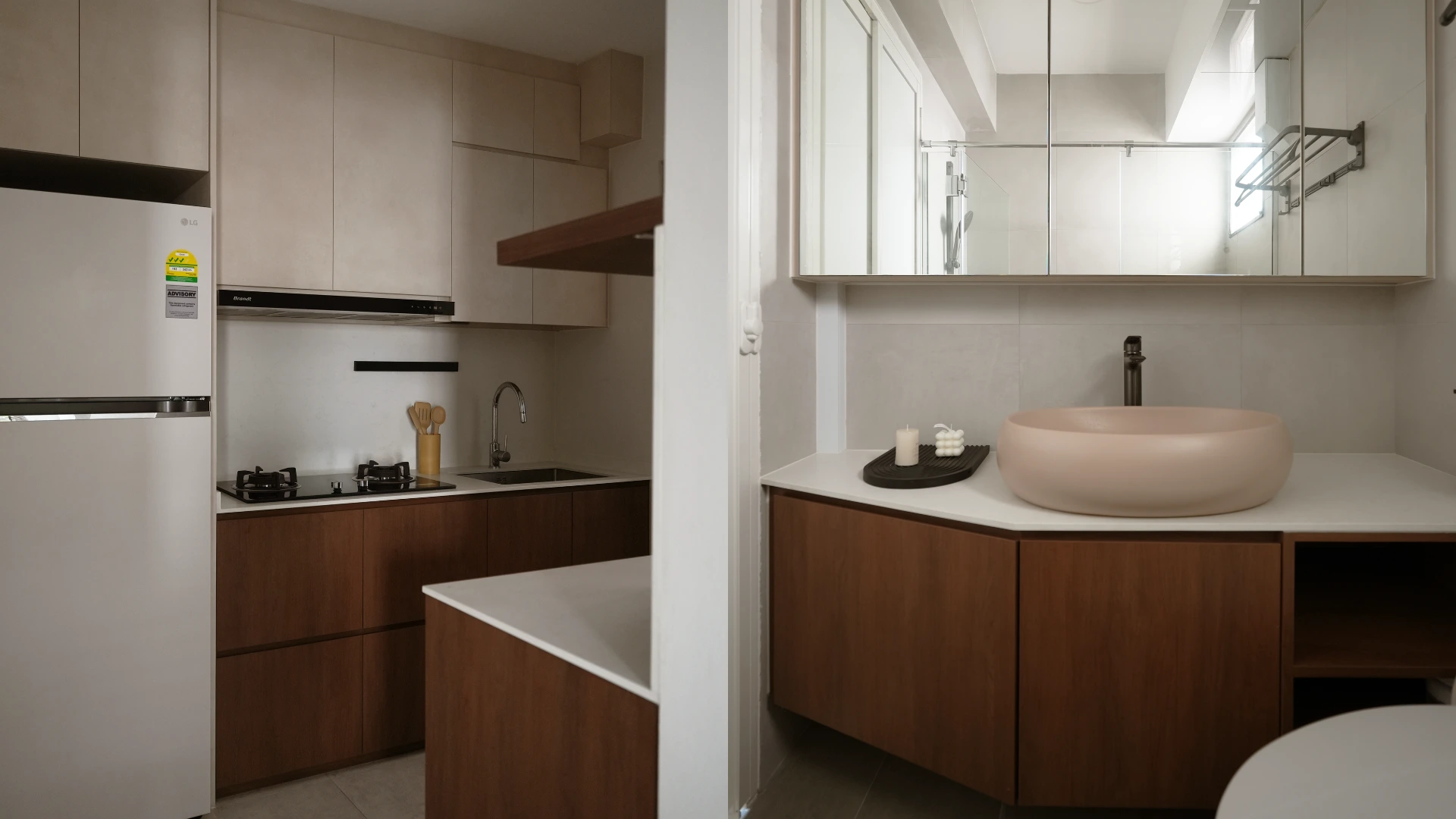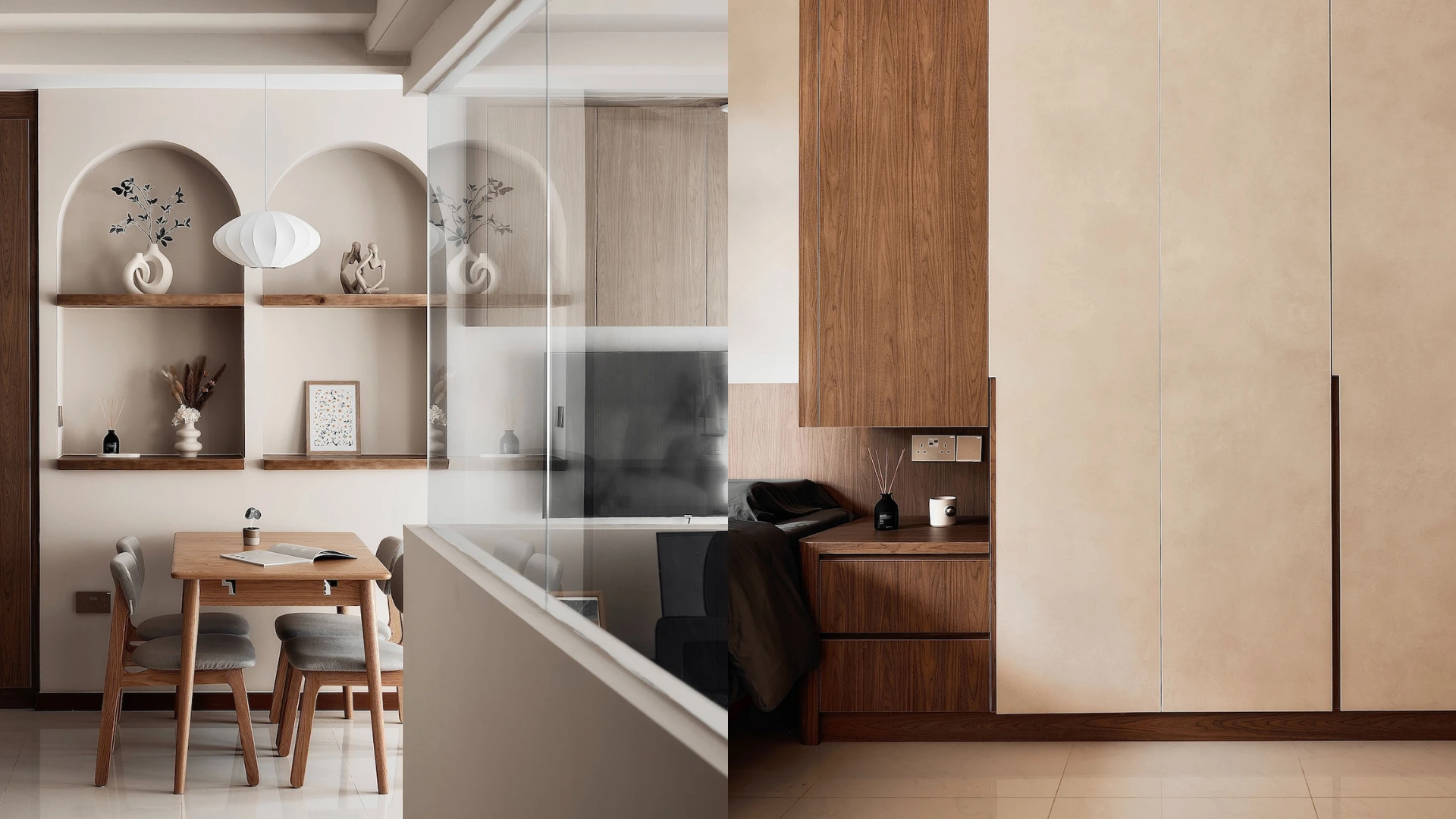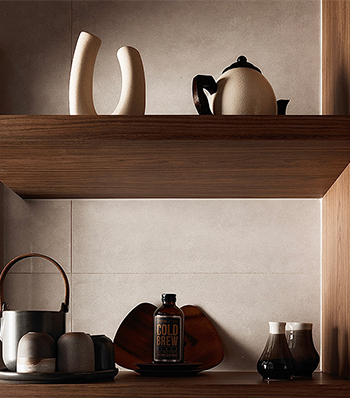
In a world where sleek finishes and pristine perfection often takes the center stage, the concept of Wabi Sabi interior design offers a refreshing alternative. Originating from Japanese philosophy, Wabi Sabi is an appreciation of the imperfect, the natural and the unrefined. In interior design, this translates into a calm, grounded environment that embraces authenticity and traces of time. Instead of hiding the flaws, Wabi Sabi welcomes them as part of the narrative.
For example, a slightly uneven handcrafted bowl or a wall finished with a naturally textured lime wash. Each of them carries a quiet story that adds warmth and depth to a space. At its core, Wabi Sabi encourages us to find beauty in simplicity and live with intention. It rejects the need for excess and encourages a mindful approach to the physical space we call home. For many homeowners in Singapore, especially in fast paced city life, this design philosophy can offer a welcome reminder to slow down and enjoy life’s subtle moments.
Key Elements of Wabi Sabi Interior Design Style
While Wabi Sabi interior design is more of a mindset than a strict set of design rules, there are several key elements that help bring this aesthetic to life in your home. The first and most important is by utilising the use of natural materials. Think of wood, stone, linen, clay, rattan and raw concrete. These materials come with subtle variations in color and texture that enhance the authenticity of the space. Secondly, the Wabi Sabi palette is intentionally neutral and muted. You will often see warm off whites, light beige, earthy browns and gentle greys in Wabi Sabi styles. These tones assist to create a calm, coherent foundation and let the form and texture of each object stand out without overwhelming the eye.
Minimalism is another strong characteristic of this style. Unlike stark minimalism, Wabi Sabi does not feel cold or empty. Instead, It is about eliminating unnecessary items so that what remains can be appreciated fully. Handmade or aged furniture pieces that show signs of wear in the right amount can add personality and richness. Finally, asymmetry and impermanence are subtly present. Not everything needs to be perfectly aligned or matched. A slightly crinkled linen throw placed casually over a sofa or a wall with gentle texture becomes part of the overall charm.
Incorporating Wabi Sabi Throughout Your Home
Applying Wabi Sabi across an entire home does not necessarily mean starting from scratch. Some small changes can lean your home toward this calm and grounded aesthetic. In the living room, focus on creating a space that feels relaxed and lived in. A simple fabric sofa with soft cushions, a timber coffee table with visible grains and perhaps a handmade vase with dried botanicals can immediately bring a sense of quiet and comfort. For the kitchen, functionality is key. Choose open shelving in natural wood, simple clay mugs and bowls that show slight variations in shape, and avoid high polished finishes in favour of soft, matte textures.
Even a small corner such as the coffee station or breakfast counter can become a serene, ritual-like space when designed with Wabi Sabi in mind. In the bedroom, aim for a restful ease. Linen bedding, warm lighting and a sensible layout free of clutter are recommended to help create a restorative environment. A slightly worn bedside table or a handcrafted bedside lamp can serve as small focal points that feel personal and grounding. Even bathrooms can benefit from Wabi Sabi qualities. Honed stone countertops, textured wall finishes and hand thrown ceramic soap dishes create a spa like atmosphere that feels natural and calming.

Wabi Sabi in Singapore Homes
Although our homes may vary from compact HDB flats to modern condos or larger landed properties, the fundamental principles of Wabi Sabi interior design can be adapted to all of them. In HDBs and condominiums, where space is often more limited, Wabi Sabi’s emphasis on simplicity and intentionality aligns naturally with the need to optimize every square foot. Built-ins can be designed with clean lines and natural materials. Even small imperfections or raw textures could become a feature rather than a flaw. By choosing a multi-functional furniture in natural finishes helps avoid visual clutter and allows the home to breathe.
Landed homes, on the other hand, often have more space to incorporate indoor and outdoor connections. It could become a quality that fits beautifully with the Wabi Sabi mindset. Courtyards, garden views or even a small balcony can be designed as an extension of the living space, blending nature seamlessly with the interior. Using materials such as timber decking, stone walkways and handmade pots helps reinforce that connection with the natural world. Regardless of your home type, Singapore’s humid climate should be taken into account when selecting finishes. Opting for suitable natural materials ensures the Wabi Sabi elements remain durable and practical over time.
The Tranquil Ambiance of a Wabi Sabi Home
Imagine coming home after a busy day and stepping into a space that instantly brings a gentle sense of calm. The soft tone of the walls, the tactile grain of a wooden dresser and the way sunlight filters through sheer linen curtains all combine to ground your senses. A Wabi Sabi interior does not shout for attention. It quietly invites you to breathe, slow down and enjoy the moment. There might be a slightly uneven ceramic bowl on the entry console, left intentionally as a daily reminder that imperfection can be beautiful. The sofa may not be perfectly tailored, but the natural creases and soft cushions make it even more inviting.
These subtle details, over time, can create a home that feels deeply personal and lived in. This is the heart of Wabi Sabi designs as an environment that does not just look good, but it feels good. A grounded environment that supports your daily rituals and brings comfort to your everyday life.
Tips to Start Your Wabi Sabi Renovation
If you are inspired to introduce Wabi Sabi into your home, it can be helpful to start small. Begin by decluttering and letting go of pieces that no longer serve you. From there, consider repainting walls in soft neutral tones, replacing overly polished furniture with natural materials, or introducing handmade decor pieces that resonate with you. Choose one room at a time and focus on how it should feel, not just how it should look. Gradually, you will find that the entire home begins to take on a calmer, more authentic presence.

Start Your Wabi Sabi Journey With Us
If you are not sure where to begin, consult with our interior designer today so they can guide you on how to start integrating Wabi Sabi interior design style into your home.















